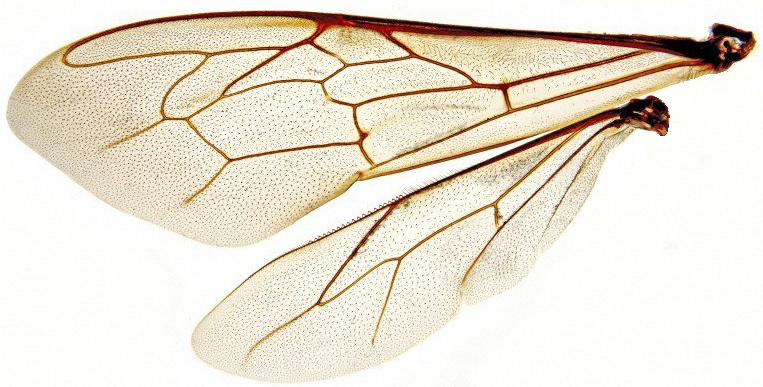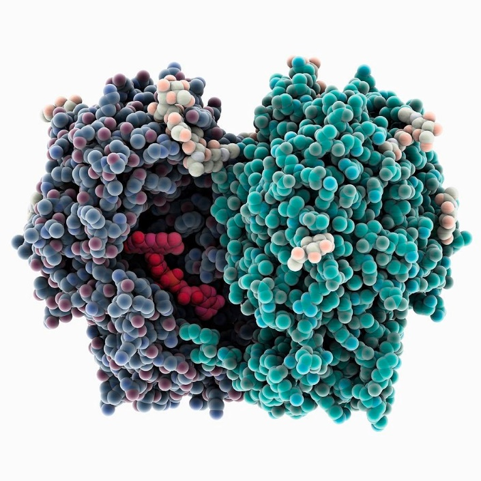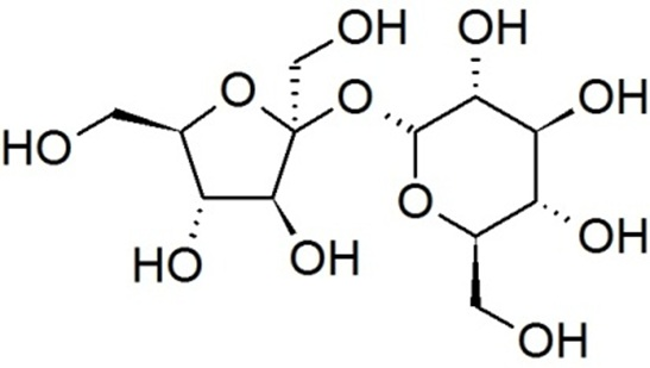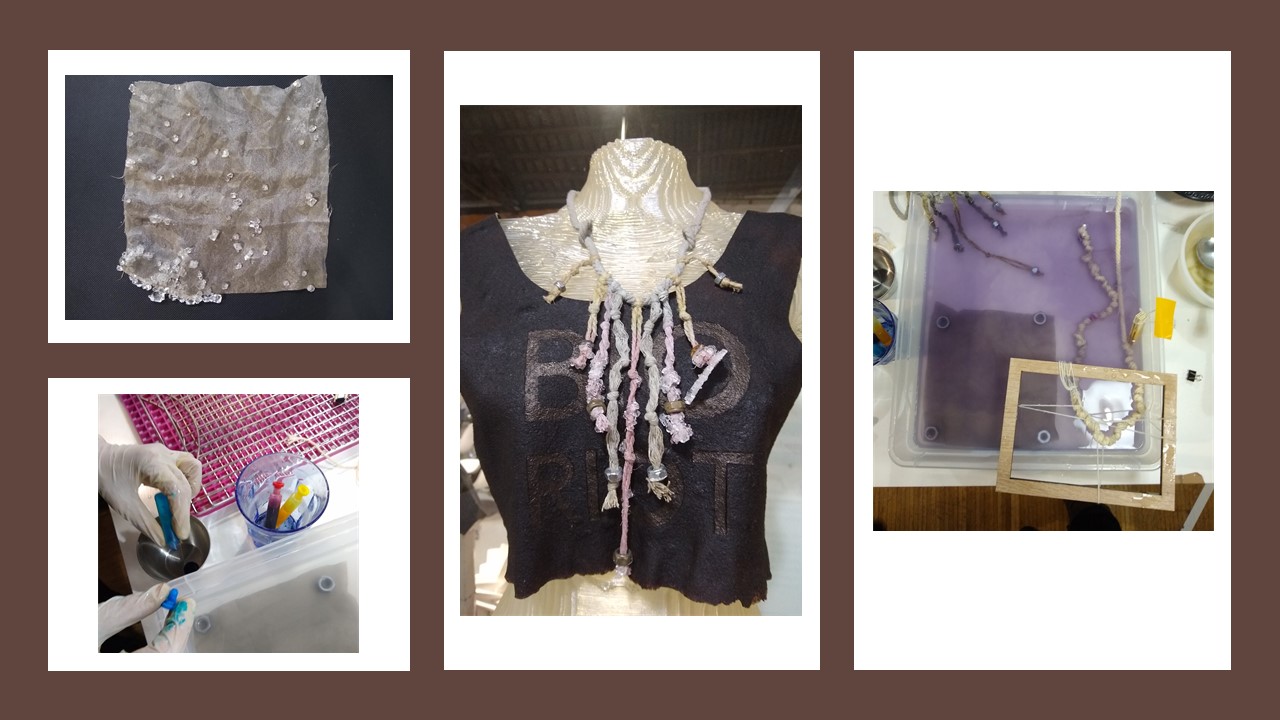9. Textile as Scaffold¶
Main inspiration was this special creature: Bee, a specie that is in danger of extinction and that is the main responsible of the politization process. For my Cristalization Project I tried to make a crystalization of an INKA Storyteller and stadistic tool called QUIPU, which I elaborated with organic cottom threads and also exprimented with a small piece of synthetic fabric.

Research and Inspiration about BEES¶
Flowering plants need the help of pollinators, like bees, to reproduce. The honeycomb apart from its function as shelter, honey factory, honey store, pollen and cradle for breeding, has other functions that depend on its special physical and chemical properties, in fact the honeycomb functions as a communication and memory network sending information to the bees that are part of this superorganism. Honey is the composition of carbohydrates, water and quite a big amount of other components. Honey contains most sugar in it. It is about 95 percent of it’s dry weight. Honey is the combination of fructose and glucose which became sucrose. The acidity content in the honey is very low which is most added by bees which is not formed itself originally. Honey always exist as buffer as it will not change it’s pH due to the addition of small amount of acids or bases.
How honey formed?¶
Usually honeybees use nectar to make honey. Honey is the composition of some complex sugars and water. Nectar is a high sugar content liquid that produced by flower. Honeybees will store the honey in their ‘honey stomach’ and pass it to the other worker bees the nectar. The bees will breakdown the nectar into simple sugars with enzymes by chewing it. The bees will then dry the nectar by ‘fanning’ their wings. The honey will be sealed by wax until it is ready to be eaten once it is gooey enough as the food storage of bees. Usually honeybees use nectar to make honey. Honey is the composition of some complex sugars and water. Nectar is a high sugar content liquid that produced by flower. Honeybees will store the honey in their ‘honey stomach’ and pass it to the other worker bees the nectar. The bees will breakdown the nectar into simple sugars with enzymes by chewing it. The bees will then dry the nectar by ‘fanning’ their wings. The honey will be sealed by wax until it is ready to be eaten once it is gooey enough as the food storage of bees.


Useful links¶
- How to stiffen leather
- Natural Fiber Composites
- 10 Color Crystals Recipes
- FROST by Regina Piil
- Betiana Pavon Leather Hat
BEE AWARE LEATHER Molding (3D Modelling and Milling)¶
First the mold should be design in Rhinoceros, the main command I used was Heightfield, so I could create a mold that assembles Bee's wings. The mold should fit into a 300x300 mm box with a 15 mm base and make your object/texture. In my case I created a negative mold in wood and them a positive made with silicone. The negative worked well for a leather scaffold while the silicone on will be tested with a bioplastic.


BEE AWARE Mold / Milling Process Parameters¶
INKA Quipu Crystalization¶
Video¶
Beauty of Crystallization¶
Textile as Scaffold Class¶
Fabricademy 2019-20 - Review class 10 - Textile Scaffold from Textile Academy on Vimeo.
BE AWARE Milling Machine Process¶
Bee Aware Milling Machine from Majavierr on Vimeo.
Bee Aware Milling Machine 2 from Majavierr on Vimeo.

